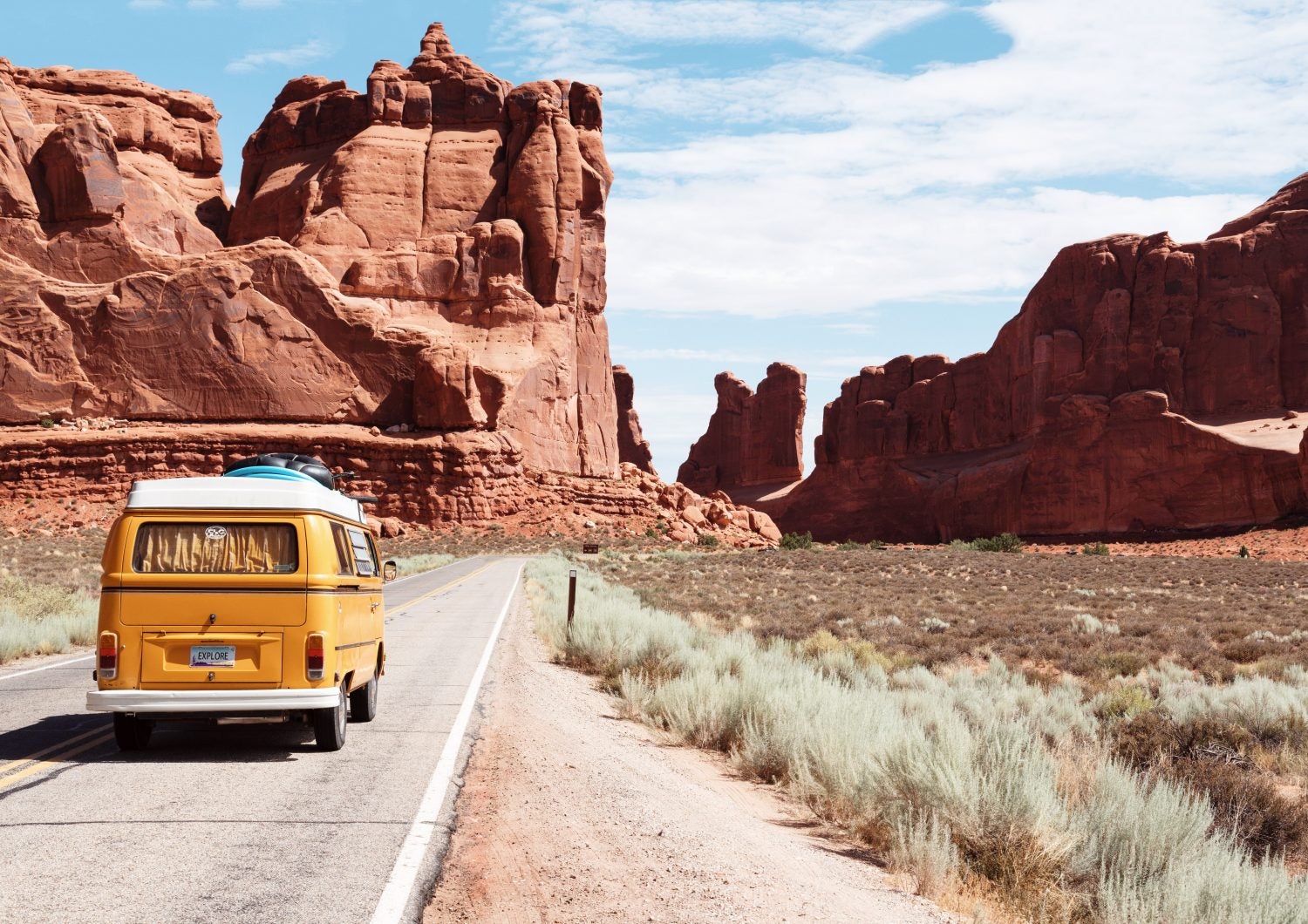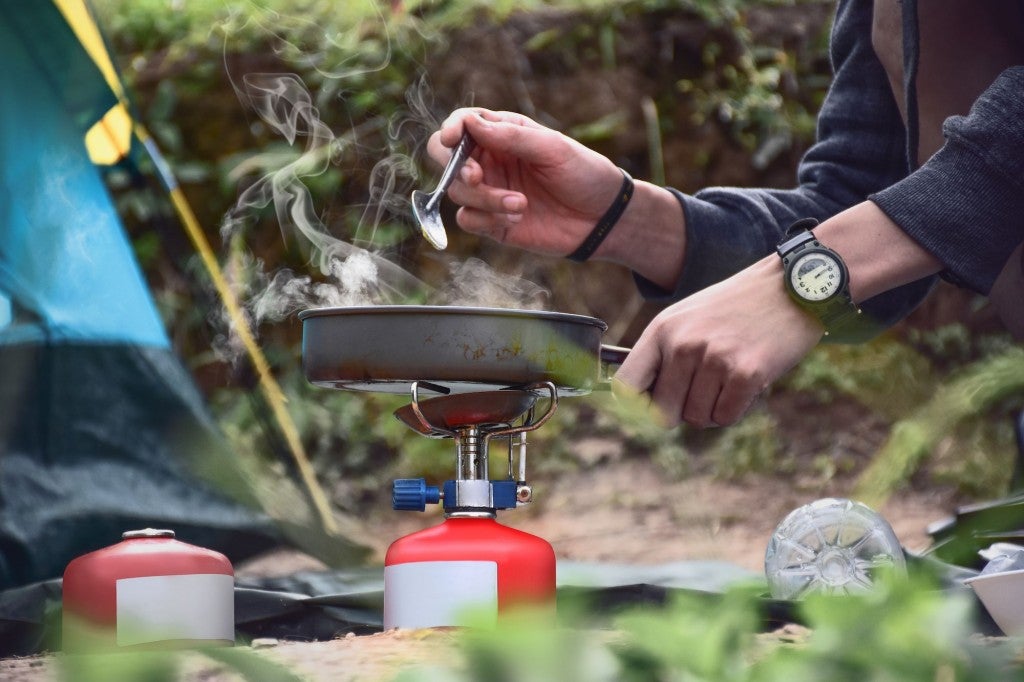This article is brought to you by our friends at Escape Campervans. They know a thing or two about travel vans and the camping cooking gear that goes inside. Use code DYRT15 and save 15% on your next campervan rental!
When Volkswagen created the the T1 in 1949, they had no idea the impact they’d have on road trips, mobile living, or an era dedicated to free love and the open road. What started as a way to transport cargo, became part of a sub-culture, encouraging people to sell their belongings and embrace a minimalist lifestyle.
Nearly 70 years later, the movement continues to grow with Ram Promaster’s and BMW Sprinters in increasingly high demand. Even if you’re not committed to living in a van full-time (it’s definitely not for everybody), there are tens, if not hundreds, of companies (like Escape Campervans) that allow you to rent a van all across the nation.
Camping Cooking Gear for Road Warriors
Whether you’re thinking about taking the plunge and crafting your own home on four wheels, or just renting one for the weekend, these are a few pieces of camping cooking gear you’ll want on hand.
Bamboo Utensils
One of the greatest considerations when building out your camping cooking gear collection is road noise. Metal utensils will rattle even on the smoothest roads. Bamboo is one of the most sustainable products on the market today. Grown without the use of pesticides, bamboo can be cut and used for production without destroying the entire plant. It’s also one of the fastest growing plants on the planet; one species grows at a rate of 36″ per day!
Beyond sustainability, bamboo is durable, non-stick, and aesthetically pleasing. And they won’t be a nuisance while you’re ambling down a forest service dirt road in search of free camping.
Cast Iron Skillet
While cast iron weighs substantially more than packable camping cooking gear, it’s multi-use (you can make tons of one-pot meals in a cast iron skillet), and easy to clean. A cast iron skillet also comes in handy if you cook on a variety of different surfaces, because it can go from the camp stove to the fire pit seamlessly.
Cast iron skillets are choice for adding iron to the diet, and they require little, if any, water to clean. Water usage ranks as a high concern when traveling off-grid for an extended amount of time, so every drop you save is helpful.
Plastic, Enamel, or Silicone Plates & Bowls
More than mediating road noise, plastic and enamel plates and bowls are sturdier and less likely to break if you hit an unsuspecting bump in the road. REI offers plenty of one- to two-person mess kits complete with a soaking bag, as well as an entire enamel dinnerware set for $70. Humangear offers a silicone bowl that can easily be bent to fit in small spaces, and it’s smooth interior makes for easy clean-up.
The only consideration with Enamel is road noise. However, extra kitchen towels can serve double duty and be placed between the plates while traveling.
Collapsible Tupperware and Measuring Cups
When space is of the utmost importance, collapsible tupperware and measuring cups can make a major difference in your camping cooking gear collection. Most van build outs now include some sort of onboard refrigeration, whether that’s a Dometic 12V cooler, or a heavily insulated Yeti. This means vanlifers can now meal prep and keep their leftovers for a few days. Regular glass or plastic tupperware can take up an entire drawer, and when you only have four drawers, that’s too much space to sacrifice.
Pressure Cooker
Many modern luxuries are left behind when you hit the open road, but there’s one appliance that vanlifers swear by: the pressure cooker. Thanks to the creation of the Instapot (which pulls approximately 1,000 watts/hour), you can easily make rice, sauté vegetables, heat soup, and pressure cook meat. There are some new models that even make yogurt. Because of their low wattage, and multi-functionality, a pressure cooker can be a game changer for nights when cooking feels like too much work.
Silicone Travel Bottles
Condiments come in all shapes and sizes, and too often those sizes are large and held in glass. Buying pantry essentials like oil and soy sauce in bulk and then storing them in smaller containers offsets cost– if you have the space.
In some vans, this isn’t an issue. Many Promaster and Sprinter conversions have ample storage under the bed for pantry essentials and camping cooking gear. If that’s the case, silicone travel bottles that you can refill are ideal for space efficiency. They also won’t break if they fall off a shelf, or leak if squished under the cast iron skillet.
The antibacterial properties of silicone prevent mold growth, and due to it’s nonporous nature, silicone containers don’t retain color. So go ahead! Store your turmeric-infused curry sauce in silicone.
Backpack Cooler
Once you’ve made your delicious cold-cut sandwiches, you’ll want a place to keep them cold when you embark on a Yosemite day hike, watersports in the Midwest, or taste testing along the Kentucky Bourbon Trail. An insulated backpack cooler from IceMule keeps your food (and beer) cold wherever you go. When not in use, the backpack rolls into itself for easy storage.
Our recommendations are based on providing value to campers across the country. Some articles may contain affiliate links. By purchasing through our articles, you help support this camping magazine.
Related Articles:
- Looking for more #vanlife tips? Check out Parked in Paradise’s Vanlife Guide
Popular Articles:
Articles on The Dyrt Magazine may contain links to affiliate websites. The Dyrt receives an affiliate commission for any purchases made by using such links at no additional cost to you the consumer.



